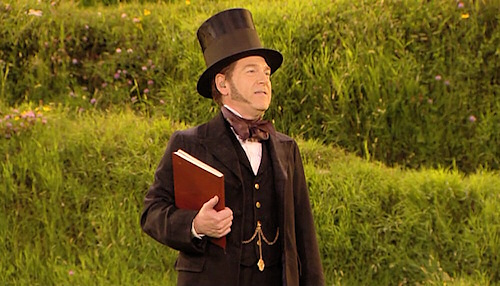Presenting The Local Yarn
I’ve been writing on this site for about fourteen years. Fourteen years. That’s 45% of my life so far.
I was seventeen when I put up my first web page as a place for people to download my free software and read my amateur attempts at satire. I’m thirty-one now. I don’t write code much anymore, my perspectives on many things have rotated anywhere between 180-270 degrees1, and my practice of writing has changed quite a lot.
In all that time, this site’s design has changed only twice, the last time being in 2004. It was a good design, too, by all accounts, But by 2011, what with the passing of time, the appearance of some new realities and the fading of old ones, several good reasons for a redesign had piled up, and we began work on it.
Jessica and I were married about a year and a half ago, and being married has turned out to be the best development in my life so far — in my pursuit of the crafts of writing and publishing no less than in many other dimensions. Jessica is a musician and a painter, and our marriage has been, among many things, something of an artistic greenhouse for us both. I felt it was essential that this site reflect the creative side of our partnership.
In that greenhouse, my experiment with podcasting bloomed, a couple of little book projects were begun, and my interest in all forms of web publishing has branched out into more nooks and crannies than may be ultimately sustainable.
What you see now, more than a year after beginning, is the result that attempts to address all of these developments. Jessica and I worked on every detail of this redesign together in stolen moments over the past year. We’ve renamed it The Local Yarn, by which we intend to allude to a slower, more rural pace of life, and the simple pleasures of conversation and storytelling2.
The way the site organizes its articles has further evolved along the lines it’s been following for years: that of a fine serial publication (the kind you hang onto for years because it’s too nice to throw away). I have repurposed blog-style ‘categories’ into ‘series’ — collections of writing which have their own titles and personality. And although I no longer separate articles into artificial ‘issues’, there’s still a book-style keyword index to scroll through.
Several small paintings are used in various places as spot illustrations, with more on the way.3 All of them, including that one in the masthead, were done by Jessica. Her paintings have also provided a warm and engaging colour pallette which we are using to complement the text.
Which, of course, brings us to the text. I’ve slowly come to realize that I value an appeal to the imagination at least as much as (possibly more than) an appeal to left-brain’d reason. We wanted this site to present imaginative writing in a way that readers of old books would find familiar and believable. The body text is set in Kepler, which was designed in the tradition of the classic modern typefaces used in many of the books you may have read as a kid. The masthead and top-level headings use Livory, which has a rustic, calligraphic feel.
Finer Points
The following details may be mainly appealing to those who take an interest in the finer points of web publishing.
The web as a medium has changed quite a lot in the last eight years. When I last redesigned the site in 2004, I followed the best practices in use at the time4; and now, eight years later, I finally feel that web standards have again evolved to the point where implementing the latest round of them will actually improve the reader’s experience.
People now read web content on smartphones, tablets, and ebook readers, in addition to computer screens, and the new design makes sure to accomodate all of them gracefully, using the Skeleton CSS framework. The margins and type proportions also change at set intervals depending on the width of your screen, to maintain a line length of roughly 12-16 words (or 7-10 words on portrait mobile screens). Many ‘responsive’ designs, even text-centric ones, seem to miss this aspect of typography, and leave the font size too big for mobile devices.
The front page now displays only links to, and not the full text of, recent articles. This is because of another change in traffic patterns since 2004: it’s no longer common for people to arrive at a site through the front page. If someone visits the site for the first time, they’re almost always following a link to a specific post that someone shared on a social network, or that they found on Google. If anyone even sees the front page of a site, it’s almost always due to some form of personal curiosity — either they did a search on the person’s name, or were referred by a business card or email signature, or they found a specific article and followed the link to the front page. That curiosity is much better satisfied by devoting more of the front page’s space to an overview of everything on offer, rather than to whatever is most recent.5
I used to hesitate to post anything, even writing I felt particularly good about, because I knew it would also have to do double-duty as a first impression for new visitors, possibly for several days or weeks. Now, curious visitors can get a quick feel for the breadth of different writing I enjoy publishing, no matter what happens to be at the top of the stack.
I still use the excellent Textpattern as the core content-serving engine. A lot of great new CMSs have been developed since my last redesgin, and I shopped around a good deal over the last year. Many of them try to simplify the writing aspect of blogging by letting you publish straight Markdown files, and by using a flat file structure instead of a database, but this approach always seems to result in a net increase in workflow complexity. Textpattern and Textile may no longer be the best tools for writing, but in my opinion, the best tool for writing isn’t a CMS, it’s your text editor. Your CMS should be a publishing tool, not a writing tool, and Textpattern excels at this.
Coda
Finally, there is one editorial change. The 68% Vitriol policy, neglected now lo these many years, is formally rescinded.
I have a lot of ideas for the future of The Local Yarn, but I’ll save those for when they are ready to roll. Meanwhile, if anything seems broken, please get in touch.
— JD
- There are several articles on this site, which I wrote years ago with careful deliberation, that I now flatly disagree with. My first impulse was simply to delete or hide these articles, but now I plan to retain them, and add a nice red asterisk to the title, and a footnote to the bottom explaining how my thinking has changed. This will preserve the history and even perhaps make those writings somewhat more interesting. These changes will also be noted in the errata. ↩
- We anticipated the new title when we began publishing our yearly book The Annual Yarn. ↩
- Writing is nice and all, but if you’re like me, many of the books you remember with the most fondness also had some very unique illustration work going for them. ↩
- It seems to me that web standards undergo cycles of volatility and stability, and that the trick is to incorporate them at the right time in the cycle. In 2004, CSS and XHTML standards had aged just enough to be able to address all of the challenges that existed at the time, so investing the effort in creating a site that validated against these standards turned out to be a good move. In 2007 the iPhone was introduced, and several approaches to mobile design were put forward that were unusable or that couldn’t adapt to new platforms. Probably only within the past year have best practices caught up to the challenge of mobile design with sound, future-proof methods. Web typography is another example: before 2011, methods existed to use more customized fonts, but those methods were fundamentally flaky and unsound. ↩
- I first read this concept of front page presentation on the post Site Redesign by Kevin Burke. ↩









